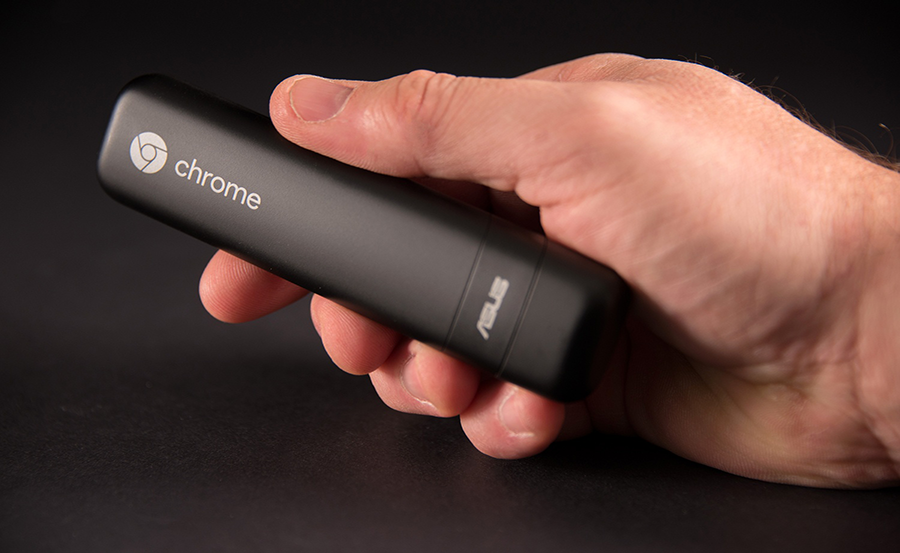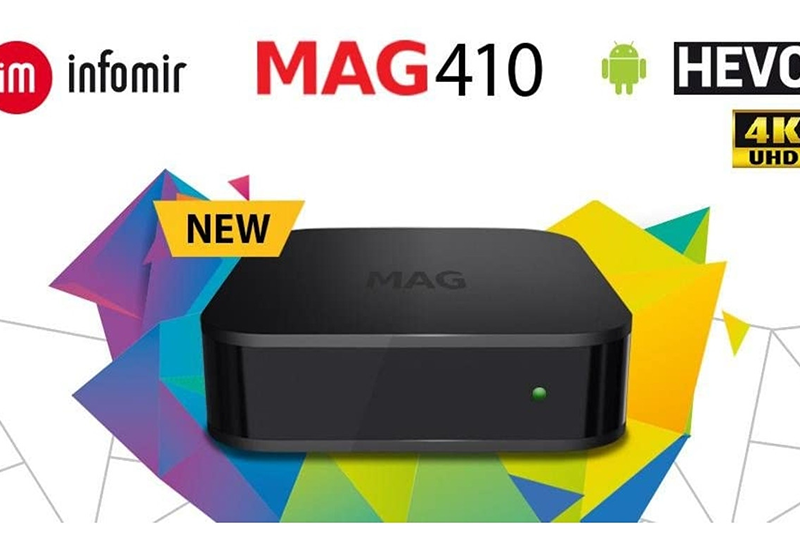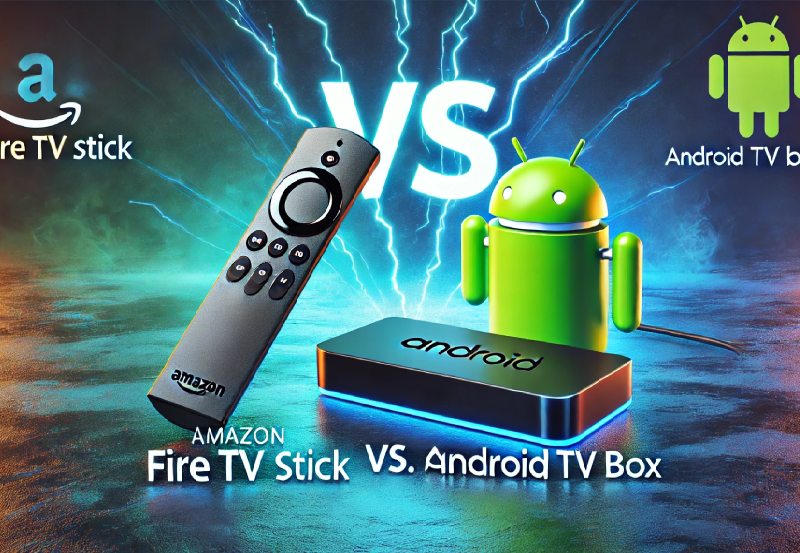In today’s tech-savvy world, streaming enthusiasts often find themselves on the lookout for devices that can offer remarkable performance without the bulk of a traditional PC. Enter the Asus ChromeBit, a compact powerhouse designed to transform any display with HDMI input into a full-fledged computer. If you’re intrigued by the possibilities of this device, you’re not alone. Let’s dive into its hardware marvels and specifications, so you can gauge whether it aligns with your ultimate streaming needs and IPTV adventures.
The Concept of a ChromeBit
As technological innovation zooms ahead, the notion of what constitutes a computer has expanded beyond desktop towers and hefty laptops. The ChromeBit by Asus represents a marvel of miniaturization—a full-scale computer shrunken down to the size of a large USB stick. But this isn’t just any stick; it holds the potential to play a pivotal role in the new age of computing.
Imagine taking your computer with you wherever you go. That’s precisely what the ChromeBit promises: portability without sacrificing utility. This peripatetic powerhouse turns any screen into a functional workspace or entertainment hub, making it an alluring choice for businesses, educators, and streamers eager to optimize space and resources.
Expert Advice:
Get access to thousands of channels worldwide with XtremeHD IPTV, designed for sports lovers and movie enthusiasts.
The compact design makes it exceedingly user-friendly, especially for those on the go or with limited room. Its small size notwithstanding, the ChromeBit miraculously houses the essentials needed for a swift and satisfying user experience.
Hardware Specifications of the Asus ChromeBit
At the core of any computing device is its hardware, the elements that dictate performance and user interaction. In the Asus ChromeBit, these components are cleverly integrated to ensure you get the maximum from your mini machine.
Processor and Memory
The ChromeBit is driven by a Rockchip RK3288-C Processor, a quad-core variant engineered for seamless multitasking. With this at the heart of the device, users can expect dependable performance for routine tasks and adventurous browsing.
Paired with 2GB of RAM, the ChromeBit ensures smoother app transitions, decent multitasking capability, and handling the basic rigors one might expect from a full-sized machine. Although it’s not meant for heavy-duty processes like gaming or extensive design work, for lightweight computing, this combination is more than ample.
Storage and Connectivity
Onboard storage encompasses a modest but sufficient 16GB eMMC, adequate for operating system files and key apps. If that’s not enough, the ChromeBit relies heavily on cloud services—a trend increasingly dominant across the tech industry to alleviate local storage constraints.
Connectivity isn’t left behind in the adaptation process. Sporting a USB 2.0 port, Bluetooth 4.0, and Wi-Fi 802.11ac, it ensures you’re well-connected, whether it’s for wireless peripherals or a stable internet connection critical for DuplexIPTV and IPTV trials.
Graphics and Display
The integrated ARM Mali-T764 graphics processor amplifies visual tasks, granting you the ability to stream video content, enjoy multimedia presentations, and browse with clarity. No, it won’t replace your gaming console, but for UHD streaming, it’s surprisingly proficient.
When tethered to a display via HDMI, the ChromeBit’s true flexibility shines. It offers a 1080p resolution output that transforms any capable screen into a vibrant venue for work and play. It’s the kind of device that turns ultimate streaming insights into a realistic, vividly rendered experience.
Operating System and Usability
Chrome OS is the breath of life for the ChromeBit, offering a lightweight, cloud-centric ecosystem. It’s specifically tailored for users who need quick browser access, document handling, and streaming capabilities without the fluff of traditional OS systems.
User Interface and Experience
The user interface is simplified, intuitive, and uncluttered, which aligns seamlessly with the user demographic yearning for straightforward solutions. Boot-up times and system operations are brisk, reflecting the efficiency that’s synonymous with Chrome OS.
For those integrated into the Google ecosystem, Chrome OS offers seamless synchronization across devices, from apps and settings to Chrome extensions and passwords—a delightful bonus for both business and personal utility.
Applications and Extensions
App availability, while not as extensive as traditional platforms, covers the essentials. Users can download from the Chrome Web Store, gearing their device with necessary tools for business, education, or entertainment purposes.
Extensions further enrich the experience, enabling users to expand functionality and personalize their interface, all while ensuring that operational speed remains unhindered.
Practical Applications and Use Cases
The Asus ChromeBit’s versatility is its greatest asset, allowing it to morph into different roles based on user needs. From educational tools in classrooms to dynamic signage in retail settings, its applications are broad and varied.
Business Implementations
Businesses have begun adopting the ChromeBit for conference room tech. Its capability to convert large screens into collaborative hubs and provide access to cloud-based resources makes it an invaluable asset.
In retail, its application in digital signage has been lauded for cost-effectiveness and ease of installation, streamlining the transformation of customer service environments into high-tech spaces.
Entertainment and Personal Use
For home users, the ChromeBit turns any living room into a fully operational media station. Compatible with popular IPTV services like DuplexIPTV, the options for streaming are practically unlimited.
Connecting the device to game-streaming services or home media servers transforms it into a multimedia center, expanding entertainment horizons beyond traditional smart TV capabilities.
Cost Efficiency and Economic Impact
One of the prime selling points of the Asus ChromeBit lies in its affordability. Providing computing power at a fraction of the cost of traditional PCs, it democratizes access to technology.
Initial Investment Versus Longevity
While the initial outlay might suggest an unbeatable bargain, the longevity and sustained performance ensure value continues long after the purchase. Limited internal storage is counterbalanced by burgeoning cloud services, pointedly mitigating any drawbacks.
Its wallet-friendly price tag makes the ChromeBit a smart investment for educational institutions or tech-upgrading endeavors with limited budgets.
Potential Limitations and Considerations
No technological device is devoid of shortcomings, and while the ChromeBit achieves sizeable feats in a small package, it does come bearing limitations one should mind.
Performance Constraints
Given its hardware, it’s evident that the ChromeBit wasn’t designed for gaming enthusiasts or high-performance seekers. It’s more suited for operational tasks, browsing, document work, and streaming, making it less ideal for graphic-intensive assignments.
Moreover, the absence of expandability poses a challenge in accommodating future software upgrades or extensive offline storage needs.
Cloud Dependency
The heavy reliance on cloud storage and applications may be an eye-catching feature for some but a concern for others, especially where network reliability is questionable or data privacy is a concern.
Users accustomed to local storage might find the transition challenging, though it’s also a stimulus to embrace increasingly internet-based solutions.
Consumer Feedback and Market Reception
Consumer feedback on the ChromeBit heralds a consensus that endorses its innovative prowess and practicality. Critics, though, highlight the areas ripe for improvement, such as RAM capacity and local storage.
Benefits Highlighted By Users
- Portability and ease of installation.
- Cost-effectiveness for educational and small business applications.
- Efficient system for browsing and streaming.
Points of Criticism
- Limited capacity for heavy software use.
- Dependence on a strong internet connection for optimal performance.
- Potential obsolescence with future tech advancements.
Final Thoughts on the Asus ChromeBit
If you’re contemplating a transition to portable and versatile computing solutions without engaging in the daunting expenditure, the Asus ChromeBit serves as an impeccable intermediary. Whether it’s the tangible benefits of streaming those ultimate insights or learning from apps via IPTV trials, the device stands out as a peculiar yet potent contributor to the digital era’s march.
Your choice will ultimately depend on personal tech needs, but with advancing compatibility and reliability, the ChromeBit is a foot firmly planted in the future.
Frequently Asked Questions

What is the Asus ChromeBit primarily used for?
The Asus ChromeBit is best suited for transforming screens into computers, perfect for business presentations, educational tools, digital signage, and personal streaming devices.
Can the ChromeBit replace a standard desktop computer?
While it can handle day-to-day tasks, it’s poorly suited for gaming or resource-intensive applications. It’s a practical secondary device rather than a full desktop replacement.
Is it necessary to have a constant internet connection?
Not all operations demand constant connectivity, but many functions, like cloud storage and IPTV streaming, heavily rely on a stable internet connection.
How does the ChromeBit handle software updates?
Updates are seamless and managed by Chrome OS itself, typically requiring minimal user intervention, akin to those of Chromebooks.
What is DuplexIPTV, and is it supported?
DuplexIPTV is a third-party multi-platform IPTV player that integrates well for streaming purposes on the ChromeBit once configured correctly.
How secure is the Asus ChromeBit?
Chrome OS boasts strong security features, and regular automatic updates ensure protection against malware and other threats.
Should I consider other devices alongside the ChromeBit?
If your needs tend toward higher computational power or specific software compatibility, exploring other mini-PCs could be prudent.
How to Expand Storage on Your Dreamlink Device





